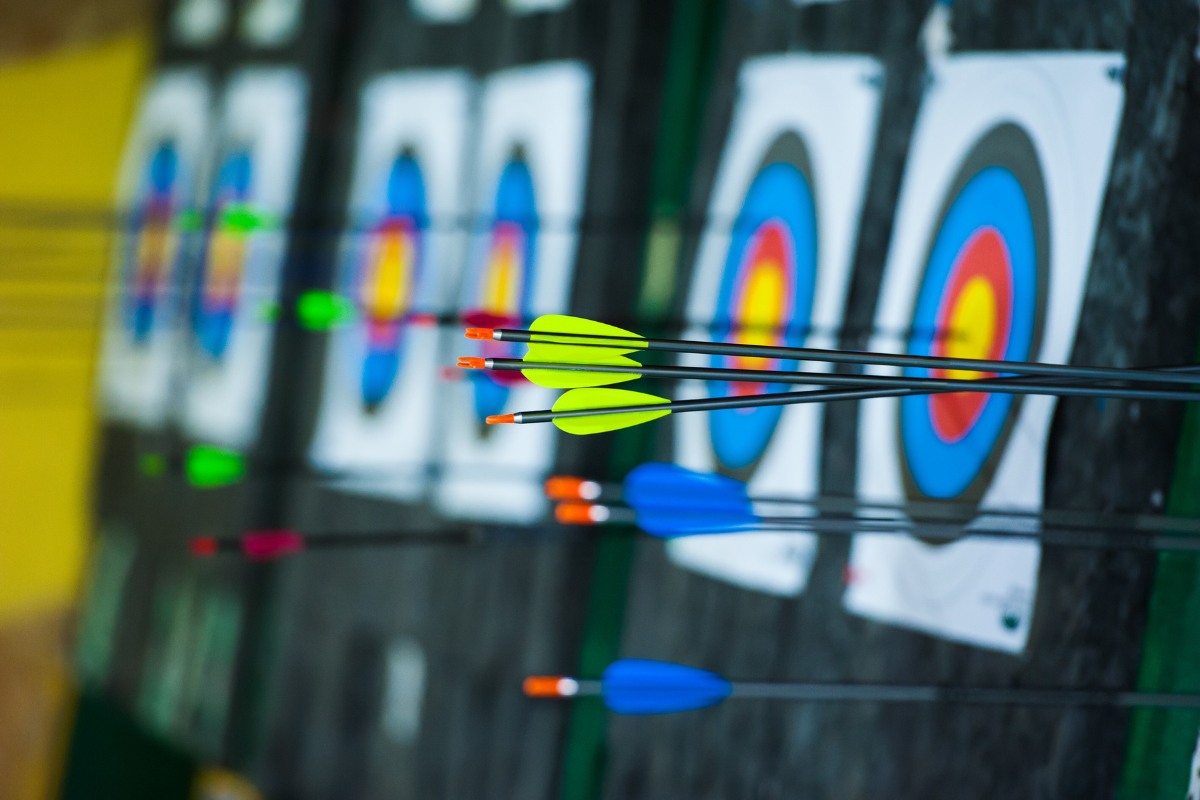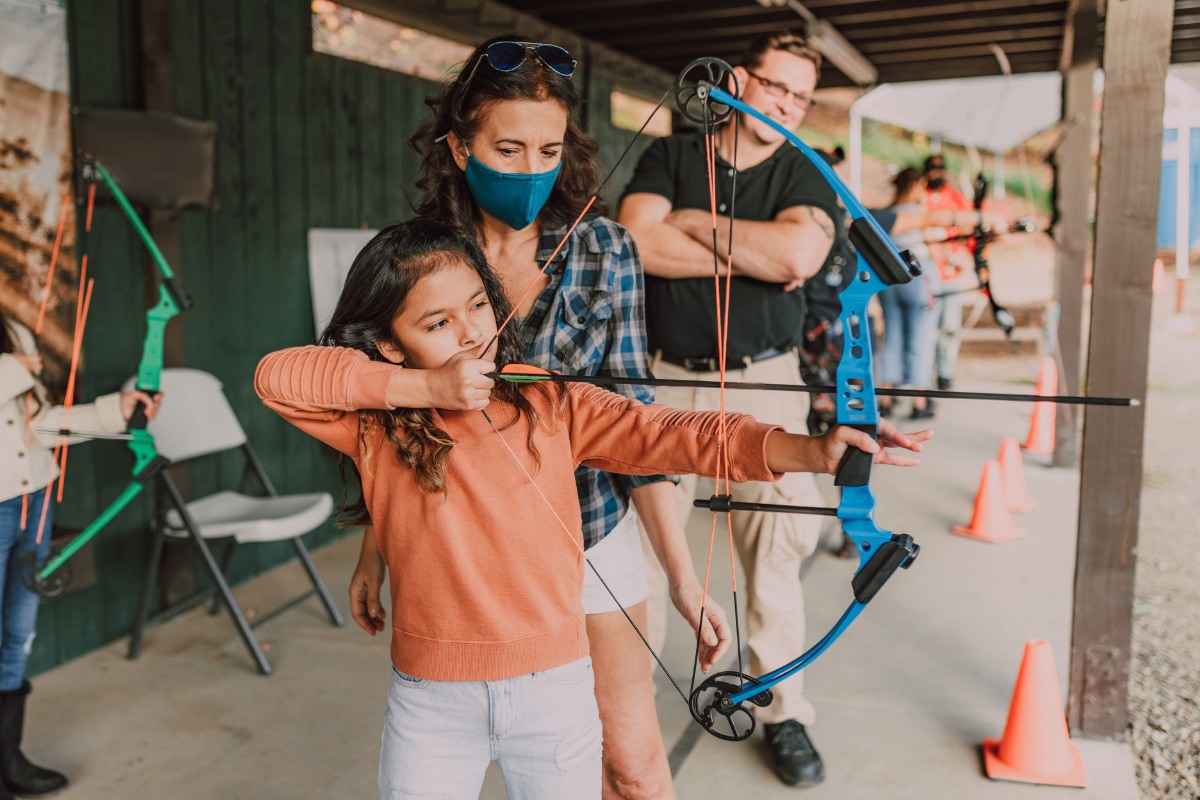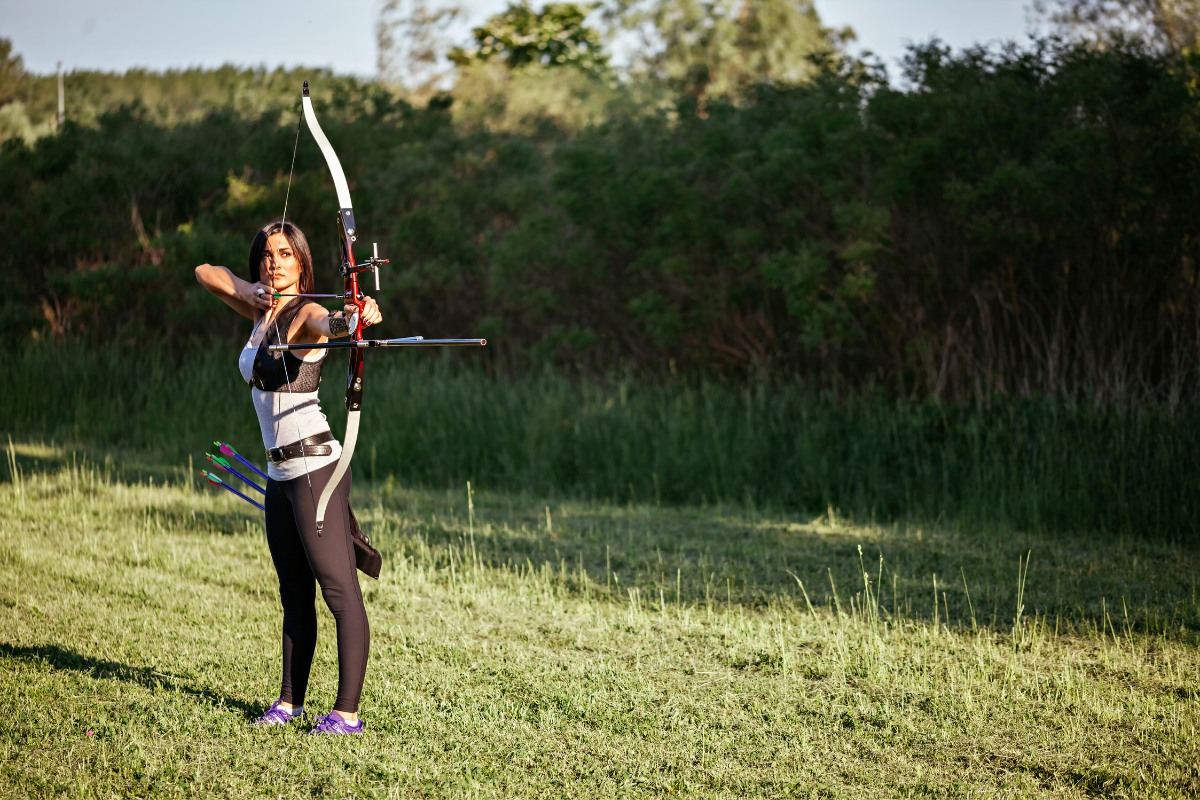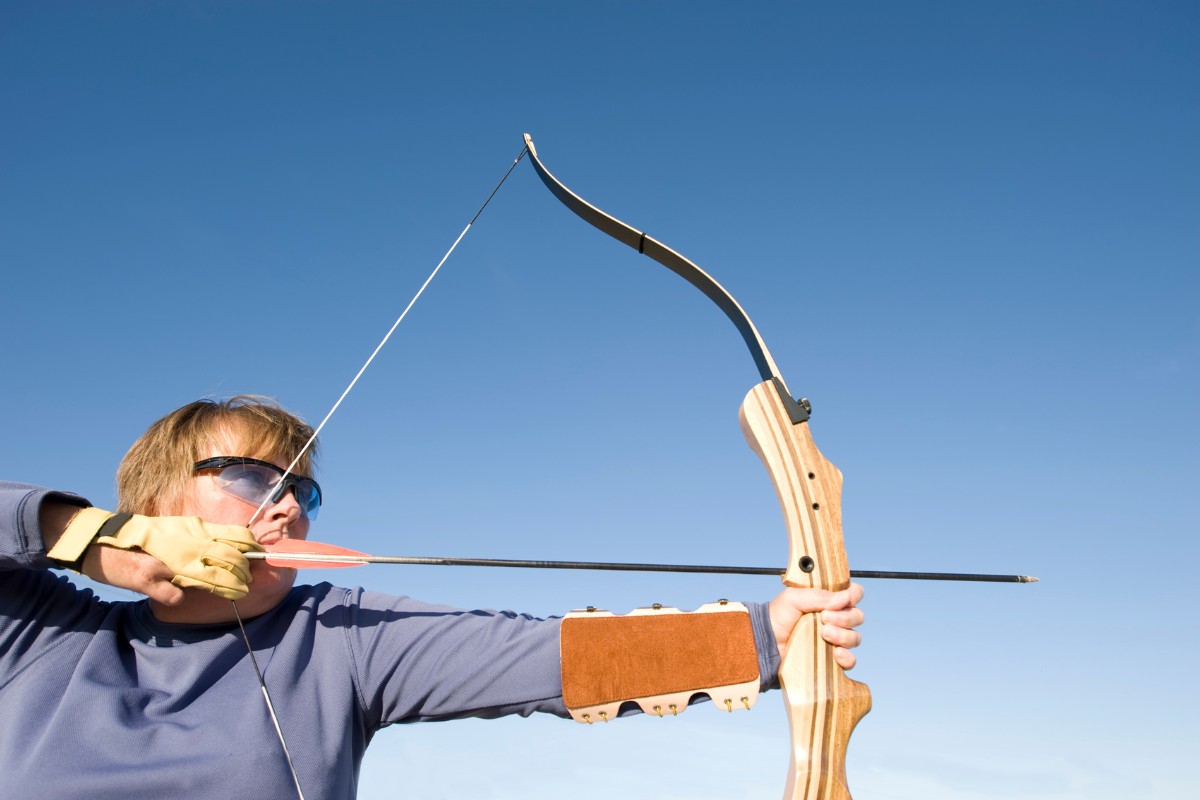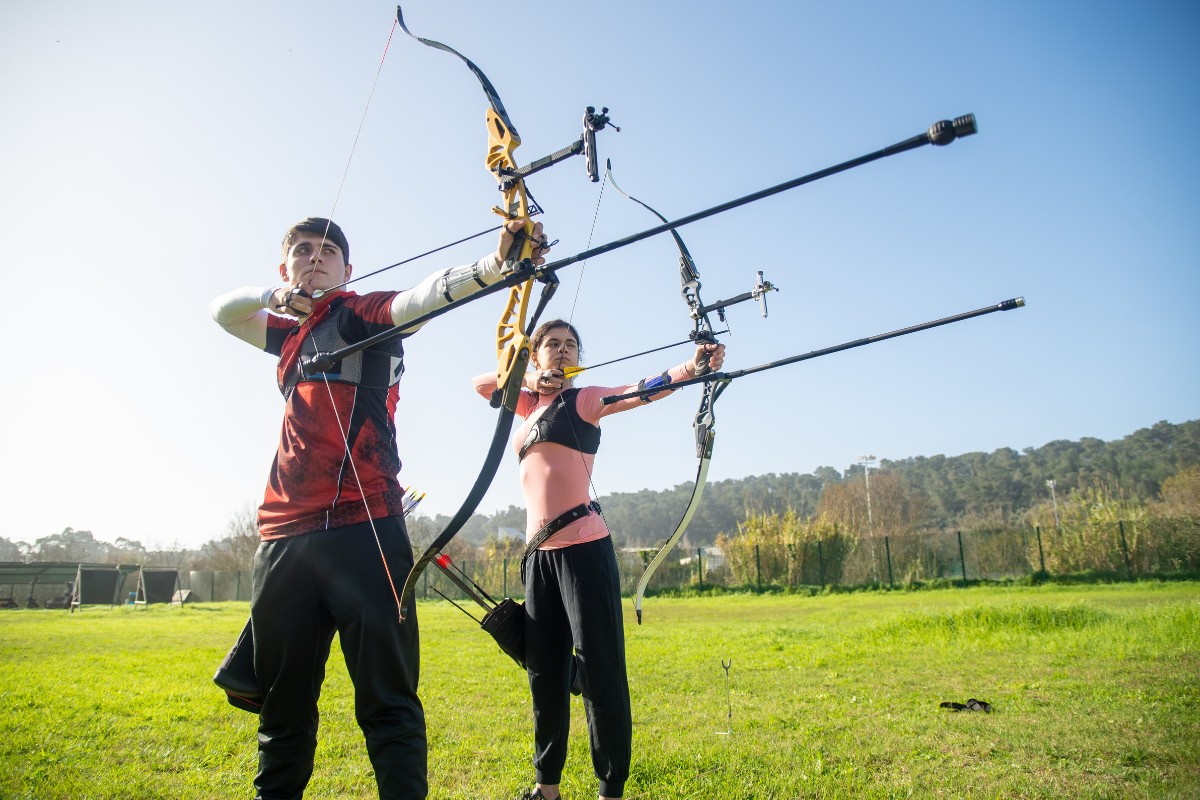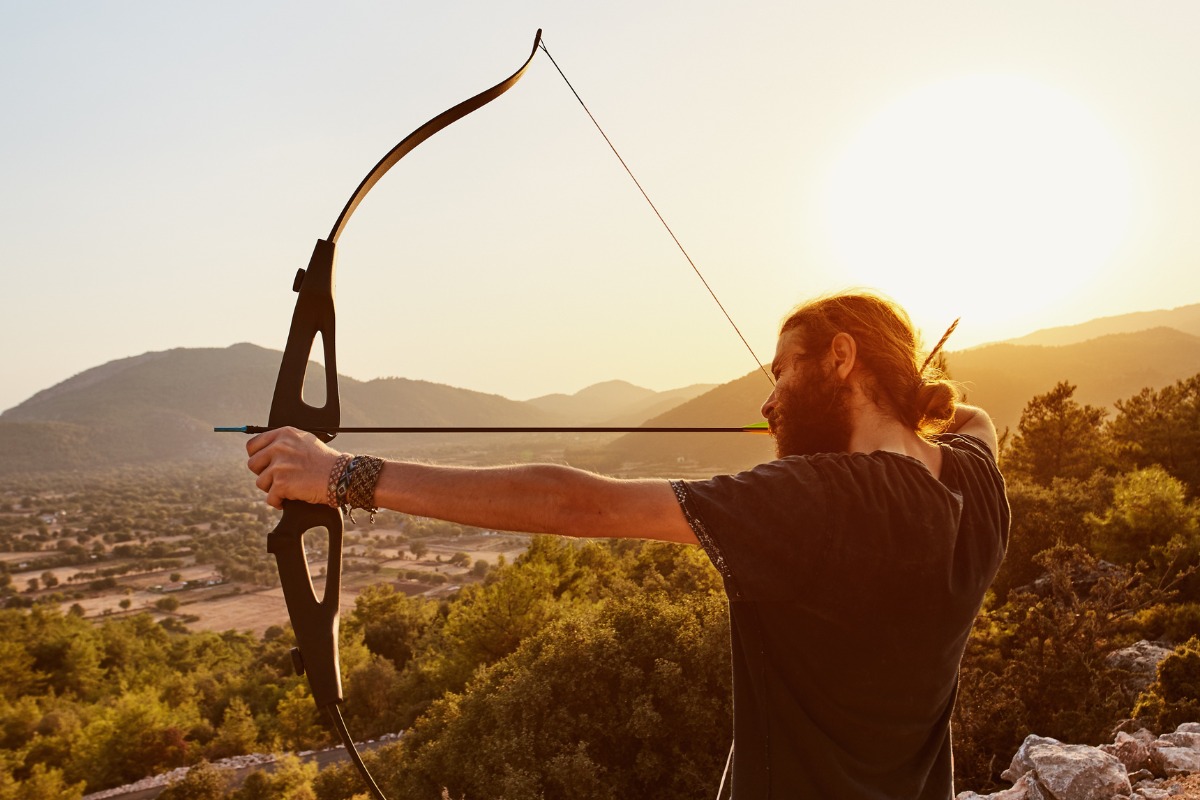Archery is arguably the most inclusive outdoor sport. Only a handful of outdoor activities allow you to participate from the moment you are tall enough to hold a bow and keep you at it until you are past 90 years of age.
Even so, it is only recently that it has stopped being presented as solely a visual sport; that you must have perfect vision in order to excel. With the rising number of visually impaired Olympic-level archers, the question is no longer how good your eyesight has to be in order to participate, but how good your sight will be as a result of your participation.
In the quest to find the truth of the matter, many personal experiences were found of people claiming their sight greatly improved once they mastered archery. But questions such as, “How exactly does it assist your sight? Are the effects permanent? What does one have to do to get the most out of it?” still linger.
It is for that reason this guide was put together to answer these and other questions that you may have regarding the impact of archery on your eyesight. But first, does it really work?
Can Archery Improve Eyesight
Yes, it can. Shooting, or merely watching an arrow on its way to the target, involves a number of exercises that are commonly prescribed to improve vision naturally. The different ways you are forced to use your sight and the nature of aiming require your eyes to adapt and improve. Think of it as lifting weights to build muscle mass.
Some of the exercises involved in archery are actually prescribed by doctors for better eyesight, so the claim of “lack of evidence” is not entirely true. It is only by knowing what they are that you can make the most out of them. Some even have benefits that go beyond improving your eyesight, as discussed further below.
How Does It Improve Eyesight
Archery helps improve your eyesight through the following exercises.
Fixation
Fixation is the ability to bring and keep a target at a distance into focus. As you shoot, the variation in distance and target as you move strengthens your fixation by challenging your eyes to adapt to various focusing needs and distances. Apart from improving your eye focus, this exercise also benefits you mentally.
This is essentially the opposite of the effect of focusing on a close target for long periods of time. Studies have shown that focusing on a close object continuously, such as a phone or computer screen, decreases your fixation and worsens your vision.
Pursuit Tracking
Pursuit tracking is an exercise that involves following a moving object with your eyes. The benefit of this activity during archery in improving eyesight was initially noticed by military officers who realized the eyesight of their trainees got better by watching arrows fly towards their targets from afar. This exercise improves eye flexibility and speed. In general, this exercise also affects the part of your brain that is associated with vision.
Although these benefits are diminished when you are the one shooting, it means that you don’t even have to engage in the activity to better your eyesight.
Two-Point Distance
This is one of the most practiced eye exercises and is often recommended by doctors to improve your eyesight. It involves bringing two points of different distances into focus. But instead of a bow and arrow, for this exercise, they recommend a finger and an object at a distance. You place your finger a couple of centimeters from your eye, then focus on it till the background turns blurry, then change your focus to the distant object as your finger blurs.
In archery, this practice is the most beneficial to your sight. It happens when you look at the target at a distance, then at the sight on the bow, then back to the distant object. This forces the muscles charged with focusing vision to adjust and readjust quickly, improving their speed and effectiveness.
This last exercise is particularly useful to people with astigmatism and aims at increasing your area of focus. With your aim in focus, try to bring the surrounding area into focus without allowing the aim to go out of focus. Do this a couple of times and vary the distance between you and the target regularly for the best results.
Shooting with Poor Eyesight
Although it may be tough, it is not a good enough excuse for poor shooting skills. There are a number of things you can do to become a good archer, and “seeing well” is not among them. At the top of the list is consistency.
According to the FITA rulebook, archers can wear prescription glasses or contact lenses, provided they are the same that the archer wears. Consistency here comes in if you have been practicing with your glasses on. If you have, you should wear them when you compete. If not, it would be better if you didn’t. Your muscles and mind will adapt to your practicing style, so changing it would be detrimental to your performance. You will see from the case of Hyun below that you don’t have to see clearly to hit the target.
You should do everything to make sure that all the factors you can control are done the exact same way and sequence. This is the only way you can achieve good results.
If you have astigmatism, your vision problems only come alive when you are tired. It is only after long hours of practice that you feel yourself having to strain your eyes for a better view. This could be your cue to pack up and wait for the next day or, if you still have time, you can take a short 10 to 15-minute break. It is enough time for your eyes to relax and allow you to get back into the range.
Tips to Improve Archery Aim
- Use a larger-sized peep or remove it completely.
- Use a verifier. They are small lenses that attach to your peep and help clear up blurry and fuzzy sight pins. They are especially handy for farsighted people and those who use glasses to read. They bring both the target and the pins into clarity.
- Consider using a bow scope paired with a clarifier.
- Change pin colors.
- Use a sight light.
- There are bows specifically designed for people with bad eyesight. Check these out to see if you can find your perfect fit.
Other Health Benefits of Archery
Archery is more than just a sport. It demands control, precision, determination, physical ability, and focus. Whether you are into it professionally or as a hobby, apart from your eyesight, archery will benefit you in the following ways.
Focus and Control
For that perfect shot, archers have to learn to avoid all distractions around them such as noise, distance, and other competitors. This skill, when mastered, can be applied in various areas of life that involve high pressure and you need to be in control.
Coordination
The perfect shot is always preceded by a high-precision routine. Find your stance, nock your arrow, grip the bow with just the right amount of pressure as you pull the string, find your anchor point, then release. These steps are usually embedded in the muscle memory of great archers so they only take a few steps. Coordinating these steps is a handy skill in situations where you need to follow a particular process to succeed.
Additionally, your hands are continuously trained to aim based on your sight. This improves your hand-eye coordination.
Upper Body Strength
A proper draw engages the muscles on your arms, chest, hands, core, and shoulders. This is quite similar to lifting weights as the muscles tense for a while before releasing the string. Continuous shooting, as long as you make a correct draw, strengthens these muscle tissues, building up strength and mass.
Patience and Calmness
Learning archery is relatively easy and may take only a day. However, it is very difficult to perfect. Although it is fun at every level, repeating the same movement over and over can get a little too frustrating at times, especially if you keep missing the target. The only way you can master and perfect it is through patience and determination. This ultimately makes you a better human being.
Even the slightest change in emotion and mental state can ruin an otherwise perfect shot. Archers have to learn to control their concentration, breathing, and nervousness. The calmness it brings could be the perfect opportunity for some internal meditation, with hours passing by in the blink of an eye.
Helps You Lose Weight
The whole archery exercise is pretty intensive. The first few shots won’t seem to take much out of you, but as you continue, it gets more strenuous, making it a great exercise. According to Harvard University, archery can burn up to 100 calories in thirty minutes of activity. This is similar to a regular thirty-minute exercise.
However, similar to most weight-loss exercises, archery is not as powerful when used on its own. It only provides exercise and keeps your body active. To shake off some weight fast, you have to combine it with other weight-loss exercises.
Related Questions
Do You Need Good Eyesight for Archery
There is no shortage of people who advocate this as a visual sport that depends on the quality of your sight. This isn’t necessarily true. Mario Scarzella, vice president of the World Archery Federation and president of the Italian Archery Federation, said, “An eye problem is not a big problem. It is still possible to shoot nicely. The mental part is more important than the vision.”
This is further proven by Im Dong-Hyun, a South Korean archer and holder of the 70-meter world archery record. With 30% normal vision in one eye and 20% in the other, he is depicted by many as legally blind. For him, the 10 concentric circles from 70 meters away appear blurry, “like a paint dropped in water.”
Although visual acuity is a prerequisite in most other sports, it is not as important in archery as the mental state, wind judgment, and the ability to shoot with a consistent technique. In fact, there are arguments that the poorer the sight, the better the shooting as you will focus less on the less important things such as aiming and more on the important ones such as shooting technique.
Are There Any Negative Effects of Archery
As you fully draw your bow, your bow arm is usually extended and your lateral elbow muscles do most of the work. As you pull the bowstring, your elbow is flexed, and the medial muscles are doing more work than the lateral muscles.
Your lateral muscles are not as strong as your medial muscles, and that is why many archers experience lateral epicondylitis, commonly known as tennis elbow. Also, these lateral muscles are responsible for keeping your hand stable, and when the arm is extended, there is no bony support to assist them. Finally, the bow transmits hand shock to the elbow, which can also be a factor.
The pain is felt on the outside of the elbow and is most severe at the bump on the outside of the elbow. It worsens when you stretch your arm.
Treatment is as simple as taking a break from archery and waiting for it to heal, then preventing recurrences. During the wait, you can take anti-inflammatory medication. After healing, you can gradually resume shooting. Steps to prevent its reoccurrence include reducing your draw weight and changing your bow to one with less hand shock. You can even use a tennis elbow band to stabilize the lateral muscles. Simple hand exercises such as wrist and bicep curls can make your muscles stronger and increase their tolerance to stress.
Final Thoughts
Clearly, archery is more than just a sport or a hobby. Participating in the exercise exposes you to better mental and physical health, making you sharper, stronger, and most importantly, better-sighted. The best part is, you will get all these benefits while you are outside playing with your bow and arrow!
